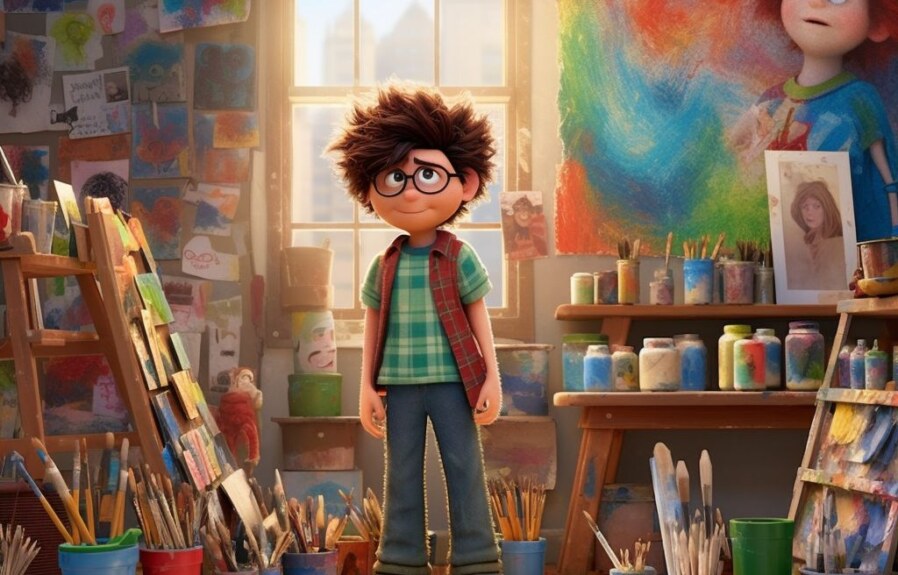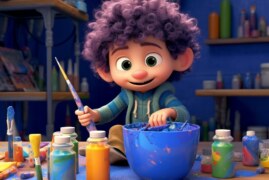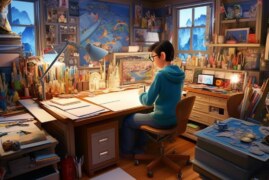Drawing is a skill that takes practice, time, and patience to master. Whether you’re an aspiring artist or just looking for a new hobby, improving your drawing skills can be a fulfilling and rewarding experience. From understanding the basics of perspective and shading to developing your own unique style, there are a variety of techniques and tips that can help you get better at drawing. In this article, we’ll explore how to hone your artistic abilities and take your drawings to the next level.
1. Why Practice Is the Key to Improving Your Drawing Skills
Practicing Regularly Helps You Improve
One of the primary reasons why practice is critical to improving your drawing skills is that it helps you develop the skill like any other skill in life. The more you practice, the more you learn and enhance your artistic abilities. Continuous practice promotes muscle memory, allowing you to draw lines and shapes more accurately and with a more confident hand.
With repeated sketching, you commit to memory how to draw objects or people, making each line flow naturally. The more you learn from your mistakes, the faster you can improve and develop. Repeat practice ensures that you retain knowledge and eventually turn exceptional drawing abilities into a habit.
Practice is the Key to Understanding Composition and Perspective
Another reason why practice is crucial to improving your drawing skills is that the more you draw, the more you understand various concepts of composition and perspective. Regular drawing sessions are beneficial not just to hone fine motor skills required to execute a good draft but also in grasping the concept of shapes, forms, and contours.
Improve your sense of space and volume with exercises like still life and gesture drawing. The more you work on this, the better you will be at estimating the size, shape, and proportionality of what you want to draw.
The Importance of Patience and Consistency
As you start your practice journey, remember that it is essential to be patient and consistent. Though some people may have natural drawing abilities, remember that consistent and purposeful practice is the key to making steady progress. Sometimes, you might get discouraged or frustrated with the slow progress, but it is vital to keep going through bad drawings and invest in getting better.
Being consistent and patient in your practice routine will not only improve your skills but also helps to build your confidence as an artist. With practice, the more progress you see, the better your motivation becomes to continue your creative journey with a confident, unyielding spirit.
2. The Importance of Understanding Basic Drawing Techniques
Developing Essential Skills
As an artist or designer, it is essential to grasp the fundamentals of drawing. Before diving into complex compositions or elaborate designs, one must gain a solid understanding of basic techniques. Proper understanding and application of these principles can bring about significant changes in the quality of artwork.
Enhancing Creativity
Basic drawing skills will give you the ability to transfer your thoughts and ideas onto paper. As you gain mastery over the techniques, you’ll also learn how to manipulate shapes, form, and space. The ability to see and understand the world around you, combined with the aptitude to put ideas onto paper, will enhance your creative ability.
Practical Applications
Basic drawing skills can be used in a wide range of fields like architecture, illustration, graphic design, and animation, among others. In architectural designs, architects must be able to sketch their buildings and designs, while animators and graphic designers must create storyboards and thumbnail sketches. Basic drawing skills are the foundation of all these creative endeavors, and mastering them will prove valuable in your chosen field.
Some of the basic drawing techniques to focus on include measuring proportions, shading, perspective, line work, and texture rendering. Whether you’re a beginner or an experienced artist, there’s always something new to learn about basic drawing. It might take some time and practice, but with the right resources and dedication, you can develop the fundamental drawing skills needed to take your work to the next level.
3. How to Find Inspiration for Your Drawing Practice
1. Explore your surroundings
Take a walk around your neighborhood, a local park or any place that takes your fancy. Look up, down and around to observe and take in your surroundings. You never know what might catch your eye and inspire you! Whether it’s a colorful flower, the architecture of an old building, or the rusted metal of a chain-link fence, inspiration is all around us.
2. Use social media
Social media is a great source of inspiration. Platforms like Instagram, Pinterest and Tumblr are filled with amazing artwork and images that can spark your creativity. Follow artists whose work you admire, explore different hashtags and scroll through your feed when you’re in need of inspiration. You don’t need to replicate what you see, but use it as a jumping-off point for your own unique creations.
3. Experiment with different materials
Trying out new art supplies and materials can give your art a fresh look and feel. Head to your local art store and pick up some new pencils, paints, or markers. Or experiment with unconventional materials like coffee, salt, or even lipstick! Don’t be afraid to get messy and see what kind of magic you can create with something unexpected.
Finding inspiration is all about keeping an open mind and being willing to view the world in a new light. Try out these tips, keep practicing and soon enough, inspiration will come knocking!
4. Tips for Overcoming Creative Blocks and Frustration
Try a different approach:
One common reason for creative blocks is approaching a problem or project with the same method repeatedly. Attempting a new approach or method can help in this situation. Try brainstorming or mind-mapping, working with a partner or team, or taking a break to come back to the task with a fresh perspective.
Tip: Write down your thoughts and ideas on post-it notes, then mix and match them in different ways to discover new perspectives.
Take a break:
Stress and frustration can lead to burnout and ultimately, creative blocks. Taking a break, whether it’s a few minutes or a few days, can help you clear your mind and refocus. During this time, do something that brings you joy or learn a new skill.
Tip: Don’t feel guilty about taking breaks, as they can be crucial in jumpstarting your creativity. Set a timer for 25 minutes and take a 5 minute break, repeat for four rounds and take a longer break afterwards.
Seek inspiration:
Inspiration can come from a variety of sources, whether it’s nature, other artists, or everyday life. Surround yourself with things that inspire you, such as art, music, or photographs, and take the time to appreciate them.
Tip: Visit a museum or art gallery, watch a movie or documentary, or go for a walk in nature to discover new sources of inspiration.
5. The Benefits of Taking a Formal Art Course
The Skills You’ll Develop:
Formal art courses offer a variety of opportunities to learn new skills and develop existing ones. Whether you’re a beginner or an experienced artist, taking an art course can help you to hone your techniques, refine your style, and experiment with new mediums. You’ll learn how to work with colour, texture, tone, and shape, and gain a better understanding of composition and design.
The Feedback You’ll Receive:
One of the most valuable benefits of taking a formal art course is the feedback you’ll receive from your tutor and your peers. You’ll learn how to give and receive constructive criticism, which can be invaluable in helping you to improve your work. Not only will you receive feedback on your technical skills, but you’ll also gain insight into your personal style and artistic voice. Whether you’re looking to pursue art professionally or just as a hobby, constructive feedback can help you to refine your work and take it to the next level.
The Social Benefits:
Taking a formal art course can also be an incredibly social experience. You’ll have the opportunity to meet other like-minded artists and creatives, share your work, and exchange ideas and techniques. This can be especially valuable if you’re used to working alone, as it can provide a sense of community and support. Additionally, taking a formal art course can be a great way to network and form connections with other artists, which can be invaluable if you’re looking to pursue art professionally or want to collaborate on future projects.
6. How to Get Constructive Feedback on Your Drawings
1. Seek Out Critique from Artists
Receiving feedback from fellow artists can be incredibly valuable. You can ask for critique from people around you, like family and friends who are into art, or join an online community like DeviantArt or ArtStation. Post your artwork and ask for constructive feedback from other artists. Take their suggestions and apply them where you think it’s necessary.
2. Attend Art Shows or Workshops
Attending art shows or workshops is a great way to get feedback from professionals. You can interact with people who have years of experience and get tips on how to improve your work. Most professionals are happy to critique your work, but you have to be respectful and open to their feedback.
3. Use Critique Websites
There are several websites that offer critique services, like Reddit and Facebook groups, Dendr and ConceptArt.org. You can submit your artwork and receive feedback from other users. This option is great because it’s available 24/7 and you can get feedback from a variety of creative individuals.
Remember, feedback is meant to help you improve your skills, not to tear you down. Always approach feedback with an open mind and a willingness to learn.
7. Making Drawing a Habit: Developing a Consistent Practice Routine
Set a Schedule
Developing a consistent drawing practice routine requires planning and dedicated time. Create a schedule that fits with your life and commit to it. Whether it’s every day, every other day, or twice a week, find a schedule that works for you to make drawing a regular part of your routine.
Start Small
Don’t put too much pressure on yourself to create perfect pieces right away. Start small and build up your drawing skills gradually. Begin with short sessions, such as 10-15 minutes a day, and slowly increase the time as you become more comfortable. Remember that the important thing is to establish a habit first.
Experiment with Different Techniques and Mediums
Experiment with different drawing techniques and mediums to keep things interesting and challenge yourself. Don’t be afraid to try new things and step out of your comfort zone. Take advantage of online tutorials, workshops, and classes to learn new skills and techniques that can help you in your drawing practice. Remember, consistency is the key. Stick to your routine and practice regularly, and you’ll see your drawing skills improve over time.
People Also Ask:
1. Can everyone learn to draw?
Yes, everyone can learn to draw. Drawing is a skill that can be developed through practice and patience. The more you draw, the better you will become.
2. What are the best tools for beginners learning to draw?
The best tools for beginners are pencils, erasers, paper, and a good reference book or online tutorial. These basic tools will help you get started on your drawing journey without spending too much money.
3. How can I improve my drawing skills quickly?
To improve your drawing skills quickly, you can try practicing a particular technique or style every day. You can also take an art course or workshop, study the work of other artists, and experiment with different drawing tools and mediums.
4. What are some common mistakes beginners make when learning to draw?
Common mistakes beginners make when learning to draw include not using proper proportions, not understanding light and shadow, and overworking their drawings. It’s important to take your time and focus on the basics before moving on to more complex techniques.
5. How long does it take to get better at drawing?
The amount of time it takes to get better at drawing varies from person to person. With consistent practice, it is possible to see improvement within a few months. However, becoming a master at drawing can take years of dedicated study and practice.
Conclusion:
Drawing is a skill that anyone can learn and improve upon through practice, patience, and dedication. Whether you are a beginner or an experienced artist, there are always new techniques and styles to explore. By investing time and effort into your craft, you can develop your own unique style and create beautiful works of art.



